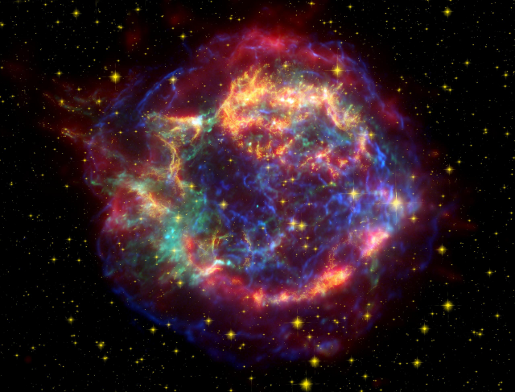Palate Cleanser
Brought to you by the Hubble, Spitzer, and Chandra instruments courtesy of NASA and JPL. Click on the picture to learn how the data from the three made this image possible. This is a supernova, Cassiopeia A, that exploded about 4 centuries ago. The resulting neutron star is the pale blue dot in the center of the image.



































2 comments
“… (although it is possible that it was recorded as a sixth magnitude star 3 Cassiopeiae by John Flamsteed on August 16, 1680[6]) …” — from the wiki.
1680 – what a time to have been alive! Antonio Vivaldi was a tot of age two; J.S. Bach, G.F. Handel and D. Scarlatti were born five years later, following and participating in a period of creativity unprecedented in all of Western music. And science… seven years later, Newton’s Principia was published and laid the foundation of classical physics. What a ride that must have been!
When I was younger, people in my circle occasionally entertained themselves in conversation by imagining what earlier era they would like to have lived in. I inevitably chose somewhere between 1600 and 1770: that period includes music’s entire Baroque and Classical periods and Beethoven’s birth year, 1770, the year at which, according to my old musician colleague Robert Wayne Moss, all composition of great music stopped. 🙂 (Actually, Wayne’s instrument, viola da gamba, had already passed from the scene a good while before that. 😈 ) And on and on…
What a great pastime! Is everybody’s palate cleansed?
One of the ‘roots’ of my family tree decided they had had enough of the religious wars in the Netherlands around then, and headed over to New Holland. There was a whole lot of things going on all around the world and people were interested and involved. It was a real age of discovery for many fields.